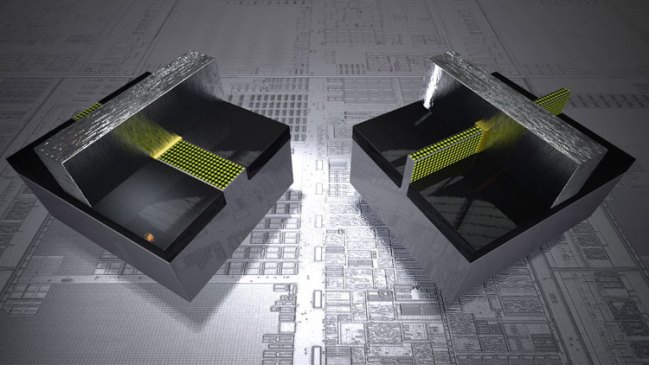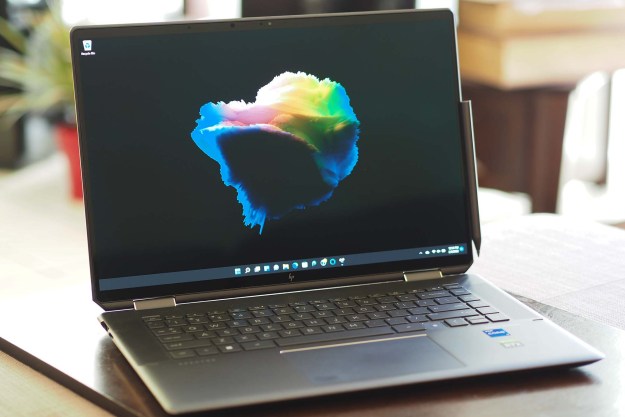Intel this week wheeled out its biggest weapon in the fight to take the mobile battle to ARM: “3D” transistors that use less electricity to produce more computing power for its next generation of processors. The technology is impressive, but if any company should understand how difficult it is to displace an entrenched vendor, it should be Intel. Historically, the advantages of being entrenched have historically worked for the Santa Clara company, not against it, making its planned upheaval a little ironic. Intel’s approach to this smart device market would mirror what a competing company would have to do to displace Intel on PCs. This means Intel needs to create a strategy that could beat Intel if Intel were the entrenched vendor rather than ARM. The stakes are high because ARM is positioning against Intel at the moment, and this move is backed by Microsoft.
Intel effectively has two paths. One: out-invest and pound down the ARM vendors through a resource advantage, kind of like how Oracle beat PeopleSoft. Two: Redefine the battlefield, kind of like how Google beat Microsoft, and how Facebook appears to be beating Google. There are three approaches to attacking an entrenched foe that work, we’ll look at these two legal ones.
The siege approach
Think of an entrenched vendor as you would an enemy inside a substantial castle, on high ground, with fortifications. Over the years, IBM and DEC, which were larger than Intel, made a run at that company and lost (Alpha and PowerPC). Sun, which was about the same size lost (SPARC). Transmeta which was much smaller, but arguably had a significant technology lead, lost. AMD has never been able to beat Intel decisively despite over a decade of trying, and substantial support from PC and server vendors.
AMD came the closest because it initially started out being plug compatible, which meant they were the closest of all the vendors to fighting Intel on a level playing field. That makes AMD’s move away from plug compatibility likely that company’s biggest historic mistake and Intel’s best strategic insurance against AMD.
To go against an entrenched vendor, you need to come to the battle with significantly superior resources. The rule of thumb is a 10 times the magnitude of what your fortified foes have. This is because you have to be able to not only displace their forces but overcome their defenses, or in this case the entrenched eco-system. In a castle under siege, that means either outlasting the folks inside or finding a way to get over or through the defended walls.
With products, that means getting people to buy what you make, so you have to fund marketing as is well. If buyers don’t see better results in a new product, they are likely to continue to buy what they know. In the mobile space, that means buying ARM-based products. No one has beaten Intel because no one has adequately resourced the effort. They have displaced Intel in products, but they’ve never displaced Intel in the minds of the majority of PC buyers. You have to do both.
Against Intel, you’d need a battle chest 10 times the combined budgets of Intel and its partners for the targeted product set. (You are allowed to use the budgets from partners to assure success.) No one has ever come close, and no one has been successful. Intel needs to come with the same level of battle chest, or 10 times the resources of the combined ARM vendors and partners, though it could also use its partners to get there. It is interesting to note that both ARM and Intel have many of the same partners.
Even with all of the money and resources, Intel would have to execute at an equal or better level to assure success. One advantage here is that ARM vendors aren’t organized. Though I wonder if announcements like this one might, unfortunately for Intel, fix that.
The flanking approach
The first smartphone was the IBM Simon, which came to market in 1992, and failed. Palm was the first to be successful with a smartphone (the Kyocera 6035) nearly a decade later, and it doesn’t exist as a separate company anymore. That was displaced by the Handspring Treo, and Handspring doesn’t exist anymore either. In fact, a decade ago none of the successful companies today had successful smartphones. Two years ago, the hot product was a netbook, not an iPad, and tablets where generally thought to be a failed early 2000s initiative by Microsoft (even though they too were started in the early 90s by companies that mostly don’t exist anymore). Apple beat the netbook not by building a better netbook, but by building something that folks saw as distinctly different. It built an iPod, iPhone, and iPad, all of which skirted right around Microsoft.
Right now, a significant and growing number of people want to buy iPads more than they want to buy new PCs. In a role reversal, Microsoft is chasing Apple in this space, much like Intel has become the underdog at the same time with ARM.
In short, the vastly less expensive path for Intel is not to displace ARM, but to replace the smartphone and tablet with something people see as superior. Given neither product is perfect (no product is) and that both products will eventually be replaced regardless, this path simply requires a better roadmap, and the ability to get the buyers on it.
Brute force, or thinking ahead?
Intel has announced significant technology advancement with its 3D chip, which really has nothing to do with 3D by the way (hello Intel messaging). But given ARM’s entrenched status on mobile devices, Intel either needs to significantly outspend its enemy, or figure out where the market will be going next, and ride that wave like it rode the PC wave.
If Intel gets this right, it could see success and growth that rivals or even exceeds its success in the 90s. If it gets this wrong, it will likely become the Palm or Treo at some point, as the currently building technology wave passes it by. In the end, for Intel to be successful against ARM, it has to do what no Intel competitor has ever done, and roll over or around an entrenched chip technology. If Intel can make this happen, the company will get near historic bragging rights. If it doesn’t, it will at least be in good company with a lot of brands it historically defeated. If that doesn’t define irony, I don’t know what does.
Oh, by the way, the illegal third approach is sabotage, which I think some folks may be using but I don’t advocate.
Editors' Recommendations
- Even Intel’s best chips won’t catch up with Apple, TSMC CEO says
- AMD might deal a huge blow to Intel with new 3D V-Cache CPUs
- Intel beats AMD in bid to release next beastly gaming CPU



